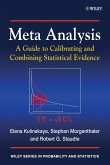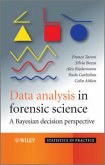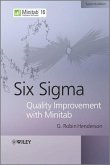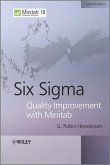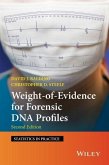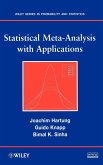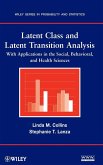This book provides the methods and software to enable statisticians and forensic experts to work effectively with evidence evaluation methods. It also covers a collection of recent likelihood ratio (LR) approaches, explores suitable software toolboxes, and includes documentation and examples about how to use them in practice. R, pre-computed Bayesian networks for Hugin Researcher, and a new multiplatform software for LR computation named "calcuLatoR" are explored. The models in this book can also be applied in other applications of analytical chemistry, making it useful for chemometricians as well.
A practical guide for determining the evidential value of physicochemical data
Microtraces of various materials (e.g. glass, paint, fibres, and petroleum products) are routinely subjected to physicochemical examination by forensic experts, whose role is to evaluate such physicochemical data in the context of the prosecution and defence propositions. Such examinations return various kinds of information, including quantitative data. From the forensic point of view, the most suitable way to evaluate evidence is the likelihood ratio. This book provides a collection of recent approaches to the determination of likelihood ratios and describes suitable software, with documentation and examples of their use in practice. The statistical computing and graphics software environment R, pre-computed Bayesian networks using Hugin Researcher and a new package, calcuLatoR, for the computation of likelihood ratios are all explored.
Statistical Analysis in Forensic Science will provide an invaluable practical guide for forensic experts and practitioners, forensic statisticians, analytical chemists, and chemometricians.
Key features include:
Description of the physicochemical analysis of forensic trace evidence.
Detailed description of likelihood ratio models for determining the evidential value of multivariate physicochemical data.
Detailed description of methods, such as empirical cross-entropy plots, for assessing the performance of likelihood ratio-based methods for evidence evaluation.
Routines written using the open-source R software, as well as Hugin Researcher and calcuLatoR.
Practical examples and recommendations for the use of all these methods in practice.
A practical guide for determining the evidential value of physicochemical data
Microtraces of various materials (e.g. glass, paint, fibres, and petroleum products) are routinely subjected to physicochemical examination by forensic experts, whose role is to evaluate such physicochemical data in the context of the prosecution and defence propositions. Such examinations return various kinds of information, including quantitative data. From the forensic point of view, the most suitable way to evaluate evidence is the likelihood ratio. This book provides a collection of recent approaches to the determination of likelihood ratios and describes suitable software, with documentation and examples of their use in practice. The statistical computing and graphics software environment R, pre-computed Bayesian networks using Hugin Researcher and a new package, calcuLatoR, for the computation of likelihood ratios are all explored.
Statistical Analysis in Forensic Science will provide an invaluable practical guide for forensic experts and practitioners, forensic statisticians, analytical chemists, and chemometricians.
Key features include:
Description of the physicochemical analysis of forensic trace evidence.
Detailed description of likelihood ratio models for determining the evidential value of multivariate physicochemical data.
Detailed description of methods, such as empirical cross-entropy plots, for assessing the performance of likelihood ratio-based methods for evidence evaluation.
Routines written using the open-source R software, as well as Hugin Researcher and calcuLatoR.
Practical examples and recommendations for the use of all these methods in practice.


